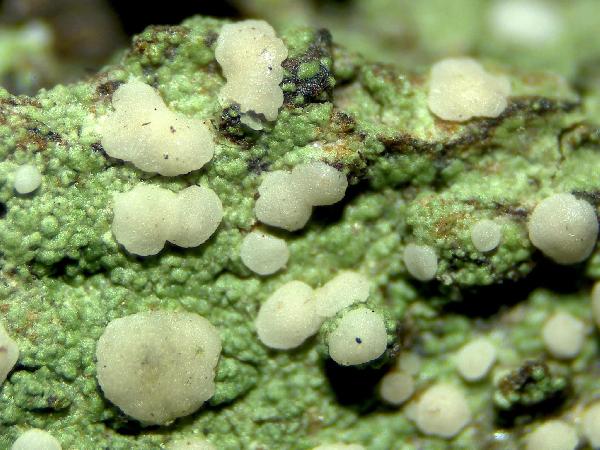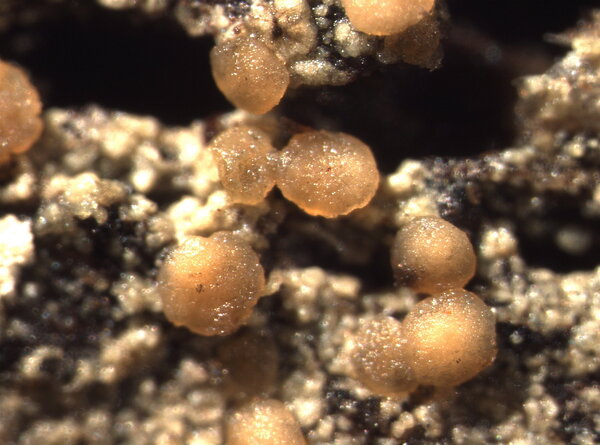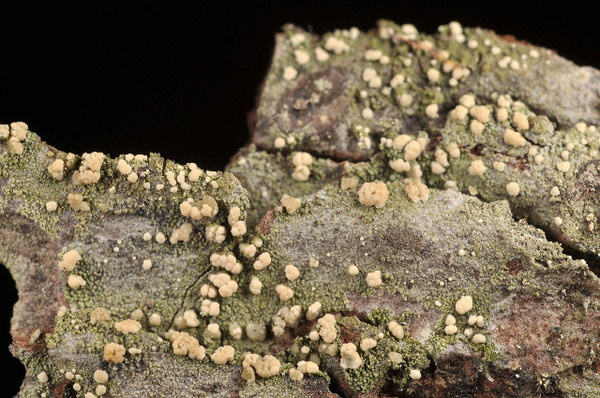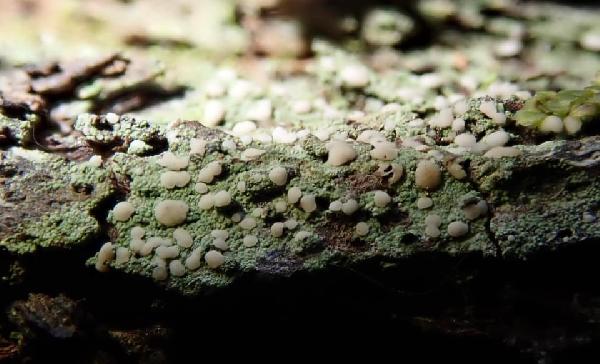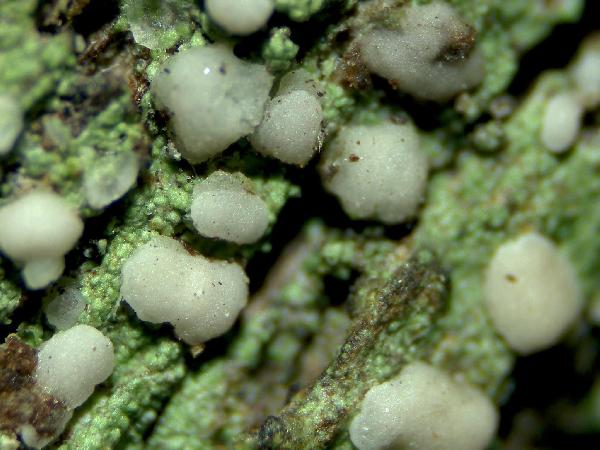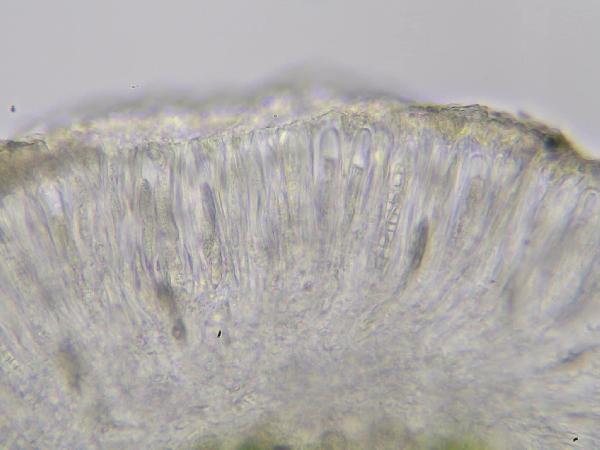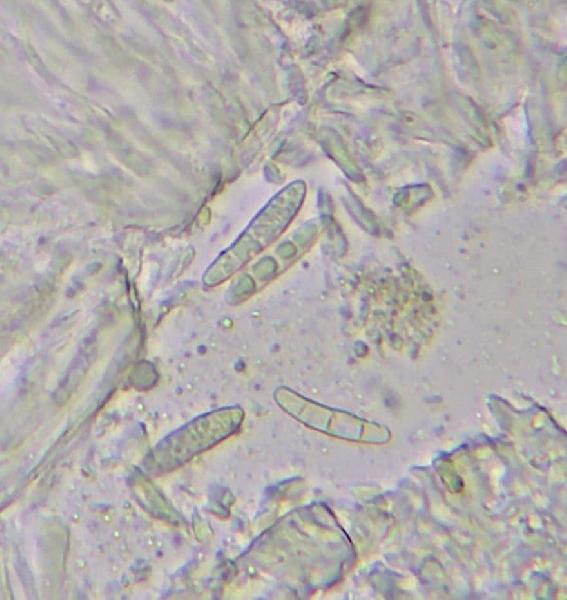Micarea alabastrites (Nyl.) Coppins
in Topham & Walker, Lichenologist, 14: 66, 1982. Basionym: Lecidea alabastrites Nyl. - Flora, 62: 207, 1879
Synonyms:
Distribution:
Description: Thallus crustose, usually episubstratic, whitish, greenish white or pale dull green, of crowded, confluent, convex, up to 0.25 mm wide areoles, rarely endosubstratic and poorly evident. Apothecia micareoid, usually numerous and crowded, sometimes confluent and tuberculate, rounded, sessile, not constricted at base, 0.2-0.7(-0.9) mm across, with a whitish to ivory-white, flat to usually convex disc, and a slightly paler, thin, soon excluded proper margin. Proper exciple thin but usually evident, c. 45 μm wide laterally, colourless, of richly branched and anastomosing hyphae; epithecium scarcely differentiated from the hymenium; hymenium colourless to faintly straw-coloured in upper part, 45-55 µm high, C+ red; paraphyses branched and anastomosing, 1-1.5 µm thick at mid-level, the apical cells to 1.8 µm wide; hypothecium more or less colourless, 45-100 µm high. Asci 8-spored, clavate, the I+ blue tholus with a wide, I+ dark blue tube structure, without ring-structure. Ascospores 3(-7)-septate, hyaline, fusiform or clavate-fusiform, often slightly curved, (16-)18-26(-29) x 4-5(-6) μm. Pycnidia frequent, pale, with a hyaline wall, of 2 types: a) macropycnidia immersed 0.1-0.22 mm across, producing curved, sometimes faintly 3-5-septate, 21-55 x c. 1 μm macroconidia; b) micropycnidia more or less sessile, 0.05-0.1 mm wide, producing narrowly fusiform-cylindrical 5-7 x 0.5-0.7 μm microconidia. Photobiont micareoid, the cells 4-7 μm in diam. Spot tests: thallus and apothecial sections K-, C+ red, KC+ red, P-. Chemistry: gyrophoric acidNote: an hyperoceanic species growing on tree trunks (often on epiphytic bryophytes), rarely on lignum. Never recorded from Italy, but to be looked for in the most humid parts of the Tyrrhenian ecoregion.
Growth form: Crustose
Substrata: bark
Photobiont: green algae other than Trentepohlia
Reproductive strategy: mainly sexual
Restricted to humid-warm, oceanic areas
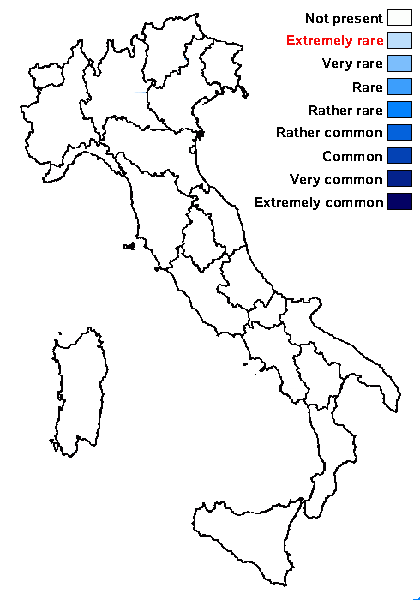
Predictive model
Growth form: Crustose
Substrata: bark
Photobiont: green algae other than Trentepohlia
Reproductive strategy: mainly sexual
Restricted to humid-warm, oceanic areas

Predictive model
 INDEX FUNGORUM
INDEX FUNGORUM
 GBIF
GBIF
